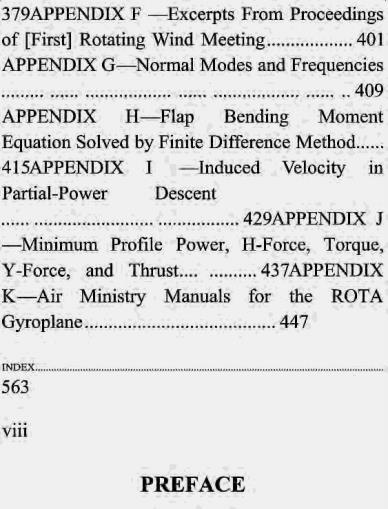
379APPENDIX F-Excerpts From Proceedings of [First]Rotating Wind Meeting..................401 APPENDIX G-Normal Modes and Frequencies ,.409 APPENDIX H-Flap Bending Moment Equation Solved by Finite Difference Method...... 415APPENDIX I -Induced Velocity in Partial-Power Descent 429APPENDIX J -Minimum Profile Power,H-Force,Torque, Y-Force,and Thrust..............437APPENDIX K-Air Ministry Manuals for the ROTA Gyroplane....... 447 INDEX 563 viii PREFACE
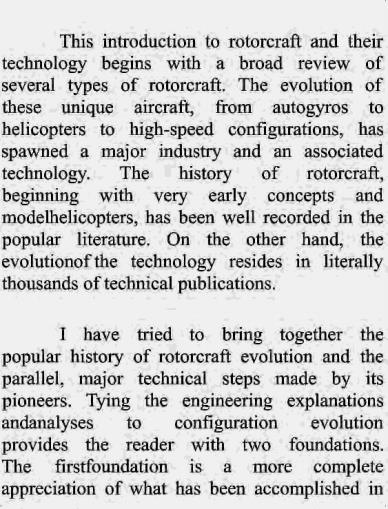
This introduction to rotorcraft and their technology begins with a broad review of several types of rotorcraft.The evolution of these unique aircraft,from autogyros to helicopters to high-speed configurations,has spawned a major industry and an associated technology.The history of rotorcraft, beginning with very early concepts and modelhelicopters,has been well recorded in the popular literature.On the other hand,the evolutionof the technology resides in literally thousands of technical publications. I have tried to bring together the popular history of rotorcraft evolution and the parallel,major technical steps made by its pioneers.Tying the engineering explanations andanalyses to configuration evolution provides the reader with two foundations. The firstfoundation is a more complete appreciation of what has been accomplished in
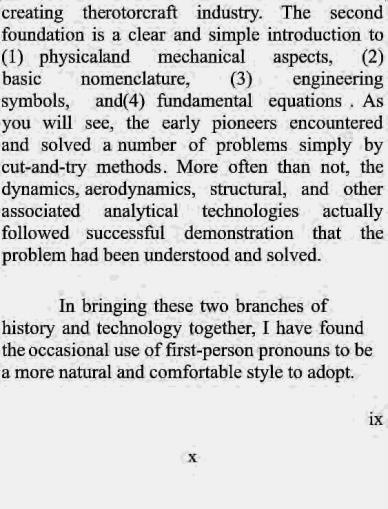
creating therotorcraft industry.The second foundation is a clear and simple introduction to (1)physicaland mechanical aspects, (2) basic nomenclature, (3) engineering symbols,and(4)fundamental equations.As you will see,the early pioneers encountered and solved a number of problems simply by cut-and-try methods.More often than not,the dynamics,aerodynamics,structural,and other associated analytical technologies actually followed successful demonstration that the problem had been understood and solved. In bringing these two branches of history and technology together,I have found the occasional use of first-person pronouns to be a more natural and comfortable style to adopt
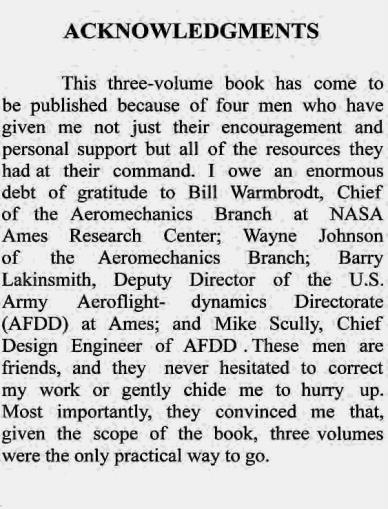
ACKNOWLEDGMENTS This three-volume book has come to be published because of four men who have given me not just their encouragement and personal support but all of the resources they had at their command.I owe an enormous debt of gratitude to Bill Warmbrodt,Chief of the Aeromechanics Branch at NASA Ames Research Center;Wayne Johnson of the Aeromechanics Branch; Barry Lakinsmith,Deputy Director of the U.S Army Aeroflight-dynamics Directorate (AFDD)at Ames;and Mike Scully,Chief Design Engineer of AFDD.These men are friends,and they never hesitated to correct my work or gently chide me to hurry up Most importantly,they convinced me that, given the scope of the book,three volumes were the only practical way to go
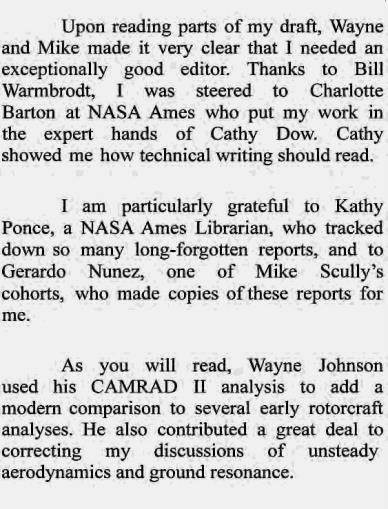
Upon reading parts of my draft,Wayne and Mike made it very clear that I needed an exceptionally good editor.Thanks to Bill Warmbrodt,I was steered to Charlotte Barton at NASA Ames who put my work in the expert hands of Cathy Dow.Cathy showed me how technical writing should read. I am particularly grateful to Kathy Ponce,a NASA Ames Librarian,who tracked down so many long-forgotten reports,and to Gerardo Nunez,one of Mike Scully's cohorts,who made copies of these reports for me. As you will read,Wayne Johnson used his CAMRAD II analysis to add a modern comparison to several early rotorcraft analyses.He also contributed a great deal to correcting my discussions of unsteady aerodynamics and ground resonance